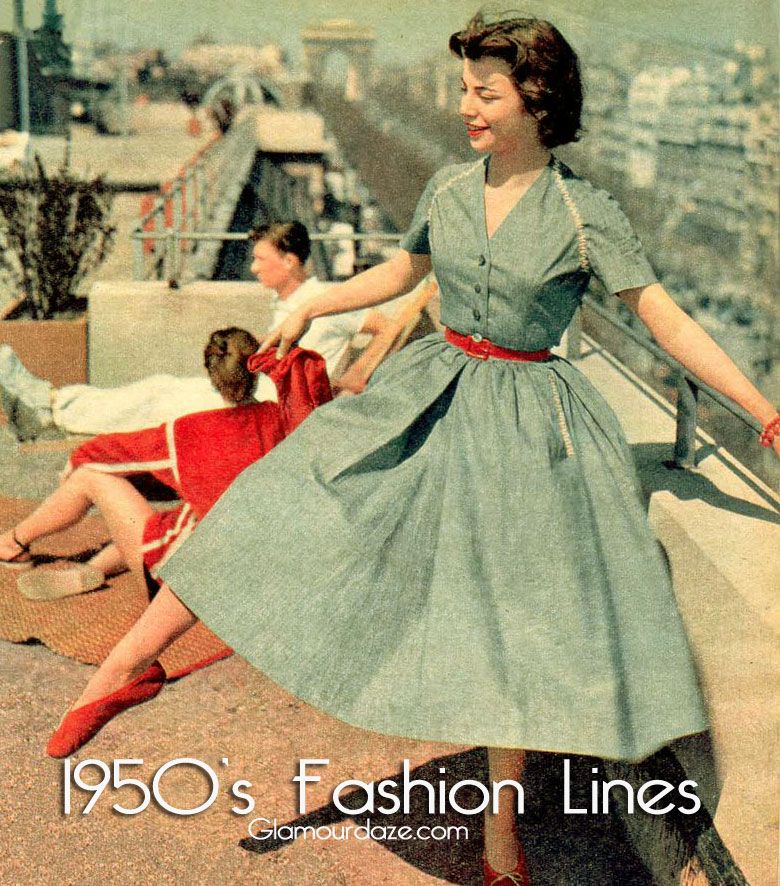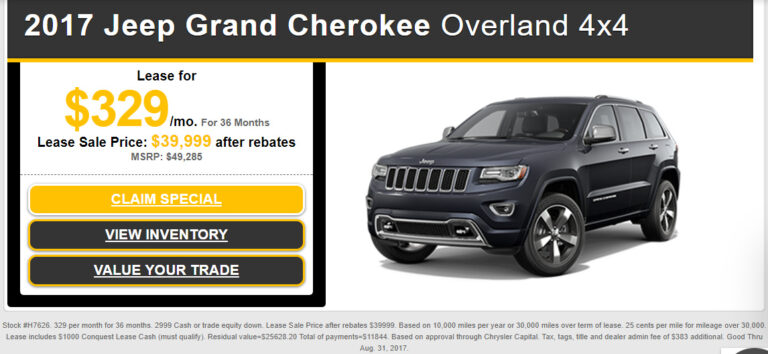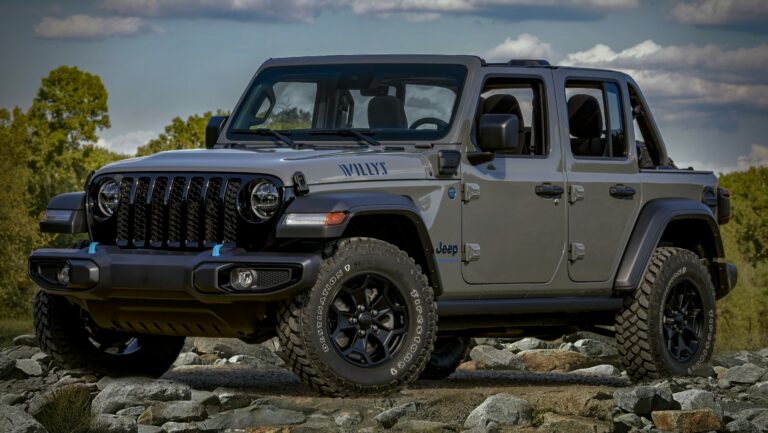1950s Jeep Truck For Sale: Unearthing a Piece of American Motoring History
1950s Jeep Truck For Sale: Unearthing a Piece of American Motoring History jeeps.truckstrend.com
In an era defined by post-war optimism and burgeoning industry, the 1950s saw the civilian market embrace vehicles born from wartime necessity. Among these, the Jeep truck, primarily manufactured by Willys-Overland (and later Kaiser-Jeep), stands as an iconic testament to American utility, ruggedness, and a distinctly utilitarian design philosophy. More than just a means of transport, a 1950s Jeep truck for sale today represents a tangible piece of history, a workhorse that helped build America, and a cherished classic for collectors, enthusiasts, and anyone seeking a vehicle with unparalleled character.
These vintage trucks offer a unique blend of nostalgia, robust engineering, and a simplicity that stands in stark contrast to modern, complex vehicles. Whether you’re a seasoned classic car collector, an off-road enthusiast, or simply someone captivated by the charm of a bygone era, understanding the nuances of acquiring a 1950s Jeep truck is essential. This comprehensive guide will navigate you through the history, allure, practicalities, and challenges of bringing one of these timeless machines into your garage.
1950s Jeep Truck For Sale: Unearthing a Piece of American Motoring History
A Glimpse into History: The Enduring Legacy of 1950s Jeep Trucks
The civilian Jeep truck lineage began shortly after World War II, as Willys-Overland sought to capitalize on the immense popularity and proven capabilities of its military Jeeps. The first civilian Jeep, the CJ-2A, paved the way for a full line of utility vehicles, including the pickup truck. Throughout the 1950s, the Willys-Overland company, and subsequently Kaiser-Jeep after its acquisition in 1953, produced a range of trucks designed for diverse purposes, from farming and construction to personal transport in rural areas.
The most recognizable models include the Willys Jeep Pickup, often simply referred to as the Willys Truck. These were available in various configurations, including 2-wheel drive and the more sought-after 4-wheel drive, and powered primarily by the robust "Go-Devil" L-head four-cylinder engine or the more powerful "Hurricane" F-head four-cylinder. Later in the decade, the iconic Willys Forward Control (FC) series, with its unique cab-over-engine design, emerged, offering exceptional visibility and cargo capacity in a compact footprint. These trucks were built to be uncomplicated, durable, and capable of tackling rough terrain, cementing their reputation as dependable workhorses. Their legacy continues today, influencing modern utility vehicles and inspiring a dedicated global following.
Why Buy a 1950s Jeep Truck Today? The Allure of Vintage Utility
Owning a 1950s Jeep truck is far more than just acquiring a vehicle; it’s embracing a lifestyle and connecting with a rich automotive heritage. Here’s why these vintage machines continue to captivate buyers:
- Nostalgia and Character: These trucks exude an undeniable vintage charm with their classic lines, exposed hinges, and utilitarian dashboards. They transport you back to a simpler time, evoking feelings of Americana and rugged individualism. Each dent and scratch tells a story, giving them a unique character no new vehicle can replicate.
- Durability and Simplicity: Built with heavy-gauge steel and straightforward mechanical systems, 1950s Jeep trucks were engineered for longevity and ease of repair. Without complex electronics, diagnosing and fixing issues is often within the reach of a dedicated home mechanic, making them a rewarding project.
- Investment Potential: While not all vintage vehicles appreciate, well-preserved or expertly restored 1950s Jeep trucks, especially rarer models like the FC series, can be sound investments. Their unique appeal and finite supply contribute to their increasing value in the classic car market.
- Versatility: From light off-roading on a scenic trail to serving as a unique marketing tool for a business, or simply being a head-turning cruiser, these trucks are incredibly versatile. Many owners also enjoy them as capable farm vehicles or weekend adventure rigs.
- Community and Camaraderie: Owning a vintage Jeep connects you to a vibrant global community of enthusiasts. Forums, clubs, and events dedicated to Willys and Kaiser-Jeep vehicles offer invaluable support, shared knowledge, and opportunities for camaraderie.
- Customization Potential: For those who enjoy personalizing their vehicles, vintage Jeep trucks are blank canvases. Popular modifications include engine swaps for more power (e.g., small-block Chevy or Ford V8s), modern suspension upgrades, disc brake conversions, and interior comforts, creating a unique "restomod" that blends classic looks with modern performance.


Navigating the Market: What to Look For When Buying
Purchasing a vintage vehicle, especially one as utilitarian as a 1950s Jeep truck, requires careful consideration. Knowing what to inspect can save you significant time and money down the line.
- Rust: The Ultimate Enemy: This is arguably the most critical factor. Thoroughly inspect the frame, floor pans, cab corners, bed, fenders, and rocker panels. Surface rust is manageable, but extensive structural rust in critical areas can render a vehicle a costly, if not impossible, restoration project. Pay close attention to areas where dirt and moisture collect.
- Mechanical Condition:

- Engine: Check for unusual noises (knocks, clunks), excessive smoke from the exhaust (blue for oil, black for rich fuel, white for coolant), and leaks. A running engine is always preferable, but a non-running vehicle can still be a good buy if the price reflects the necessary overhaul.
- Transmission & Transfer Case: Test all gears, including reverse, and ensure the 4×4 system engages properly (if equipped). Listen for grinding or clunking sounds.
- Brakes & Steering: Inspect brake lines, master cylinder, and wheel cylinders for leaks. Check steering for excessive play. These are vital for safety.
- Suspension: Look for worn leaf springs, shackles, and shock absorbers.
- Originality vs. Modification: Decide if you want an all-original, period-correct vehicle for purist restoration or a modified "driver" that might already have modern upgrades. Original parts are valuable for collectors, but well-executed modifications can enhance usability.
- Documentation: A clear title is paramount. Service records, previous ownership history, and any restoration receipts add significant value and provide insight into the vehicle’s past.
- Pre-Purchase Inspection (PPI): If you’re serious about a vehicle, especially one located far away, invest in a PPI by a reputable mechanic experienced with vintage vehicles. They can identify hidden problems that might escape an untrained eye.
Types and Models of 1950s Jeep Trucks
While the general term "1950s Jeep truck" is broad, specific models offer distinct characteristics:
- Willys Jeep Pickup (e.g., 4×4 Pickup Truck): These are the most common and recognizable. Available in various wheelbases (e.g., 118 inches) and often equipped with the F-head "Hurricane" six-cylinder engine (for later 50s models, particularly the 6-226 engine in the Kaiser era), they are robust, simple, and relatively easy to find parts for. Their classic styling makes them popular for both restoration and restomod projects.
- Willys Forward Control (FC-150, FC-170): Produced from the mid-1950s onwards, these unique cab-over designs offer a distinctive appearance and practical advantages. The FC-150 was built on the CJ-5 chassis, while the FC-170 was larger, utilizing a stretched Wagon chassis. Their rarity and quirky aesthetics make them highly sought-after by collectors, often commanding higher prices, especially the larger FC-170.
- Willys Jeep Station Wagon / Panel Delivery: While not strictly pickups, these vehicles share many mechanical components with the trucks and are often converted into pickup-style vehicles by enthusiasts. They offer a larger interior space and can be a more affordable entry point for someone wanting a 1950s Willys utility vehicle.
The Buying Process: A Step-by-Step Guide
Acquiring your vintage Jeep truck can be an exciting journey. Follow these steps for a smooth transaction:
- Define Your Budget and Purpose: Determine how much you’re willing to spend, not just on the purchase, but also on potential restoration, maintenance, and upgrades. Clarify your primary use: a show truck, a daily driver, an off-roader, or a long-term restoration project.
- Research and Locate:
- Online Marketplaces: Hemmings.com, Bring a Trailer, eBay Motors, ClassicCars.com, and specialized forums (e.g., WillysTech.com, TheCJ2APage.com) are excellent resources.
- Classic Car Dealers: Some dealerships specialize in vintage 4x4s.
- Auctions: Be cautious, as "as-is" sales offer little recourse.
- Local Ads/Word of Mouth: Don’t overlook local classifieds or asking around within classic car communities.
- Initial Inquiry and Photos: Contact sellers with specific questions about the vehicle’s history, mechanical condition, and any known issues. Request detailed photos or videos of problem areas (rust, leaks, interior wear).
- In-Person Inspection (or PPI): This is non-negotiable. If you cannot inspect it yourself, hire a professional. Test drive the vehicle if possible, paying attention to how it starts, runs, shifts, and brakes.
- Negotiation: Be prepared to negotiate. Research market values for similar vehicles in comparable condition. Point out any flaws or needed repairs to justify a lower offer.
- Paperwork and Transport: Ensure the seller has a clear title in their name. Get a detailed bill of sale. Arrange for insured transport if you’re buying out of state.
Restoration, Maintenance, and Ownership
Owning a 1950s Jeep truck is an ongoing commitment, but a rewarding one.
- Parts Availability: Surprisingly, many parts for Willys Jeep trucks are still available. Reproduction parts, New Old Stock (NOS), and used components can be sourced from specialty vendors like Walck’s 4WD, Kaiser Willys Auto Parts, and various online communities. Engine and drivetrain components often have cross-compatibility with other vehicles of the era.
- Mechanical Simplicity: The straightforward mechanical design means that many repairs can be done with basic tools and a good service manual. This makes them ideal for learning vehicle mechanics.
- Common Upgrades: To enhance drivability and safety for modern roads, many owners perform:
- 12-Volt Conversion: Replaces the original 6-volt system for better starting and brighter lights.
- Disc Brakes: Significantly improves stopping power over original drum brakes.
- Power Steering: Makes low-speed maneuvering much easier.
- Engine Swaps: Popular for more power and reliability, though purists might avoid this.
- Modern Seating and Seatbelts: For comfort and safety.
- Challenges:
- Rust Repair: Extensive rust repair can be very costly and time-consuming.
- Finding Skilled Mechanics: While simple, not all modern mechanics are familiar with vintage vehicles. You might need to find a specialist or learn to do much of the work yourself.
- Fuel Economy: Don’t expect great gas mileage.
- Safety Features: These trucks lack modern safety features like airbags, ABS, and crumple zones. Drive defensively.
1950s Jeep Truck Estimated Price Guide
Prices for 1950s Jeep trucks vary significantly based on model, condition, originality, and location. This table provides a general estimate for the most common models.
| Model Type | Condition Tier | Estimated Price Range (USD) | Key Characteristics |
|---|---|---|---|
| Willys Jeep Pickup | Project/Barn Find | $3,000 – $8,000 | Non-running, significant rust, incomplete, major mechanical overhaul needed. |
| (e.g., Willys 4×4 Truck) | Running Driver | $8,000 – $20,000 | Functional, may have minor rust, needs cosmetic/mechanical attention, daily drivable. |
| (Models like 4×4 6-226, | Good Condition | $20,000 – $40,000 | Minimal rust, well-maintained, mostly original, solid mechanically and cosmetically. |
| 4×4 4-75, etc.) | Restored/Show Quality | $40,000 – $70,000+ | Professionally restored to original specs or high-quality restomod, excellent condition. |
| Willys Forward Control | Project/Barn Find | $5,000 – $12,000 | Non-running, extensive rust, missing parts, major restoration required. |
| (FC-150, FC-170) | Running Driver | $12,000 – $30,000 | Drivable, unique styling, may have mechanical issues or cosmetic flaws. |
| Good Condition | $30,000 – $60,000 | Well-preserved, rare, solid mechanics, good interior and exterior. | |
| Restored/Show Quality | $60,000 – $100,000+ | Top-tier restoration, concours quality, highly sought after by collectors. |
Note: These prices are estimates and can fluctuate based on market demand, specific year, original options, and geographical location. Highly customized or rare examples may exceed these ranges.
Frequently Asked Questions (FAQ) About 1950s Jeep Trucks
Q1: Are 1950s Jeep trucks reliable?
A1: When properly maintained and, if necessary, restored, they can be surprisingly reliable for their age due to their simple mechanical design. However, they require consistent attention and are not comparable to the "turn-key" reliability of modern vehicles.
Q2: Are parts hard to find for these trucks?
A2: For common models like the Willys Jeep Pickup, parts availability is generally good, with a strong network of reproduction parts manufacturers, NOS suppliers, and used parts from salvage or online communities. Rarer models like the FC series might have more challenging parts availability for specific body or trim pieces.
Q3: Can a 1950s Jeep truck be a daily driver?
A3: While possible, it’s not typically recommended without significant upgrades. They lack modern safety features, comfort, and fuel economy. Many owners perform modifications like disc brakes, 12V conversions, and engine swaps to make them more suitable for regular use.
Q4: What’s the main difference between a Willys truck and a CJ?
A4: Willys trucks (pickups, wagons, FCs) were designed as utilitarian work vehicles with dedicated truck frames and beds/bodies. CJs (Civilian Jeeps, like the CJ-2A, CJ-3B, CJ-5) were smaller, open-top recreational and utility vehicles, closer to the original military Jeep design.
Q5: Are they good for off-roading?
A5: Absolutely. Their original 4×4 systems, short wheelbases (on some models), and robust construction made them highly capable off-roaders in their day. While they lack modern suspension articulation, they are still excellent for vintage trail runs and light to moderate off-roading.
Q6: How much does it cost to restore a 1950s Jeep truck?
A6: Restoration costs vary widely. A basic mechanical refresh and paint job might cost $5,000-$15,000. A full, frame-off, concours-quality restoration can easily exceed $50,000, often surpassing the vehicle’s initial purchase price.
Conclusion
The allure of a 1950s Jeep truck for sale extends far beyond its functional capabilities. It’s an opportunity to own a piece of American industrial history, a vehicle that embodies resilience, simplicity, and a no-nonsense approach to utility. Whether you envision it as a rugged off-road companion, a charming farm truck, a unique show vehicle, or a rewarding restoration project, the journey of owning one of these vintage Jeeps is as rich and characterful as the trucks themselves. With careful research, a keen eye for condition, and a passion for vintage machinery, you can unearth a true automotive treasure that will bring years of enjoyment and a tangible connection to a bygone era.






